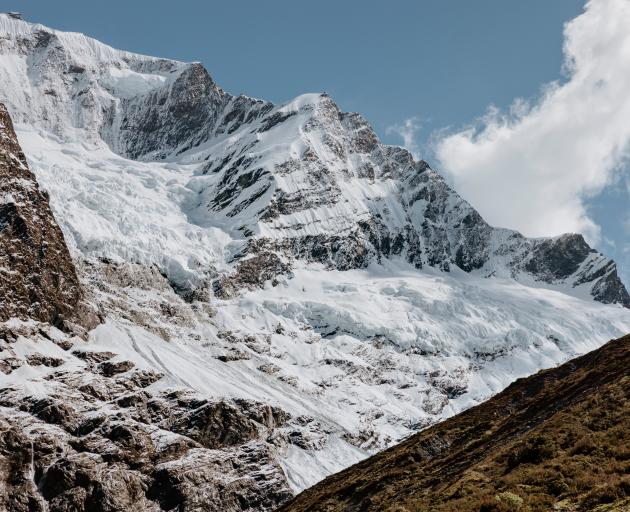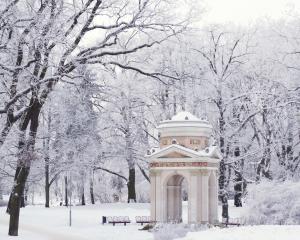
Soft, kaleidoscopic wildflowers gently dance in alpine meadows, surrounded by an alpine diorama that leads to the sky. Water tumbling off the precipitous rocks feeds the river you were only just gazing at as it snaked alongside the track.

About 20,000 years ago, during the last Ice Age, the Rob Roy Glacier filled the entire valley, creating the carved-out cliffs and gorges seen from the track. The glacier flowed into the Matukituki Glacier and Wānaka Glacier, creating one ice channel to the Clutha Valley. Now, the hanging glacier seen from this walk is all that remains.
Battle sandflies, battle for car parks and battle the urge to eat the chocolate from the scroggin before you leave. There is only one way to hike from Raspberry Creek, so do your best not to get geographically misplaced from the get-go. The track travels up the true right along the west branch of the Matukituki River and swans through some cow paddocks to begin with. After a while, depending on how many cows you stop to converse with, you’ll reach a swing bridge. If you don’t cross the swing bridge, you will end up at Mount Aspiring Hut, confusing everyone involved.
The track gradually climbs through beech forest, passing through some ethereal, glacier-cut gorges. If it’s avalanche season (winter-early spring), you may only be able to access the viewing point (45 minutes one way), which is still worthwhile, particularly to look at the glowing, swirling alpine water alongside the track.

If avvies pose no risk, the trundle to the end of the track will take you to the forest’s exit, opening up the vista ahead to a wildflower- and waterfall-filled valley. Rob Roy’s cobalt crevasses glint and sparkle if they’re not hiding behind clag. This valley is sun-drenched on a good day, and you might even hear the unmistakable sounds of icefall tumbling down the sheer mountain faces.
Return the way you came, thanking the track fairies that it’s all downhill from there.
Rob Roy Glacier
Matukituki Valley, Mount Aspiring National Park, Otago
Heck level: 4/10 (Things are heating up — a layer is removed, but not in a spicy way, in a sticky way. You probably still smell good enough to flirt with hotties at the hut).
Wow factor: 3/5 (Every tramp is sublime, just some are more so).
Getting there: The access to Rob Roy Glacier is the same for many adventures, high and low, so get used to this picturesque drive. From Wānaka, Raspberry Creek car park is 50km along Wānaka-Mount Aspiring Rd. The final 30km are unsealed and the last 10 are prone to washout.
Length: 10km return.
Duration: 4 hrs return.

Best season: Late spring-autumn.
Track type: One way.
Track amenities: Toilets and information signs in car park.
Access: Unsealed road: 4WD or a high vehicle is recommended. The road in has seen a brave campervan (or thousand). However, if there’s been recent rain, the fords will fill up and your camper might get more of an adventure than it signed up for.
Combo: Raspberry Creek car park is the starting point for many walks in this book, all in the West Matukituki Valley, Aspiring Hut, Liverpool Hut and French Ridge Hut to name a few.
— Wild Walks Aotearoa by Hannah-Rose Watt, Penguin, RRP$50.













